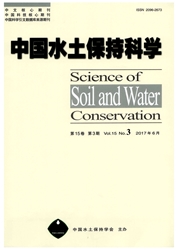

 中文摘要:
中文摘要:
从蒸散测量方法,区域蒸散研究理论基础,模型方法及参数获取,GIS、GPS时空扩展等多个方面对区域蒸散研究进行分析,探讨目前存在的蒸散计算模型、遥感反演模型参数精度及时间空间尺度转换等若干问题。指出以良好的物理基础为背景、以模拟SPAC中能量、物质交换过程并利用遥感技术确定地表关键参数来建立的区域蒸散数值模型是今后的发展趋势。方法上与3S技术紧密结合、多源数据(不同分辨率、不同时序卫星资料及数字高程模型等)结合可以减少模型中的非遥感参数,提高参数的反演精度和时空尺度转换精度,也将对区域蒸散的空间不均匀性问题解决带来希望。
 英文摘要:
英文摘要:
Regional land surface evapotranspiration research based on 3S technology has become a main research direction for there large space, dynamic and easy mapping features. A review is discussed about its theoretical foundation, measurements, models, parameters, and temporal-spatial scaling, and also focuses on some existing problems, such as regional land surface evapotranspiration modeling, its parameters accuracy and the temporal-spatial scale transformation. It is concluded building models based on the physical background and the simulation of energy and material exchange in SPAC and using the RS technology to establish key parameters would be a trend. On the other hand, combining with 3S technologies and multiple data sources (remote sensing and DEM data) will reduce non-remote sensing parameters, improve the accuracy of the retrieved parameters and temporal-spatial scaling. Further more, it would work on the land surface heterogeneous effect in the field of regional evapotranspiration.
 同期刊论文项目
同期刊论文项目
 同项目期刊论文
同项目期刊论文
 期刊信息
期刊信息
